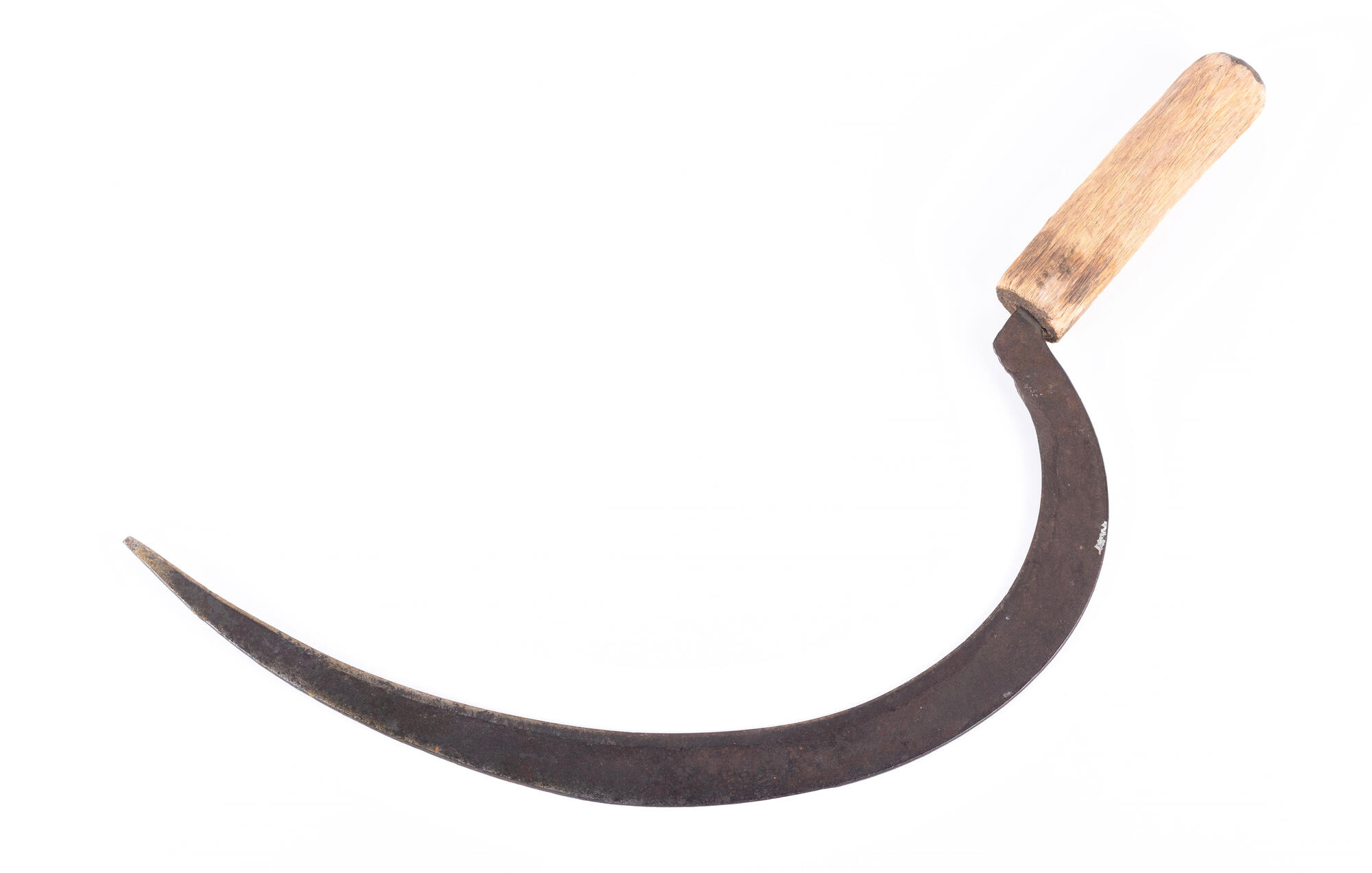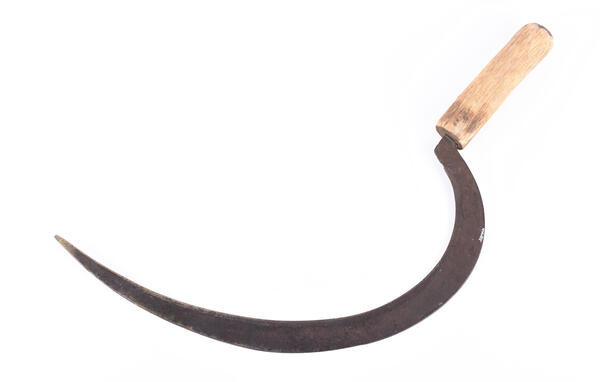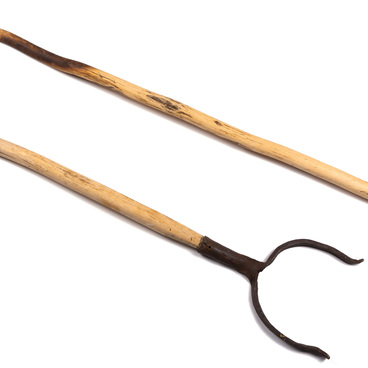Throughout history, bread was considered to be virtually the central point in Russian cuisine. The flour to prepare it was obtained from harvested grain crops, which were planted annually and harvested by hand. A sickle, an agricultural tool with a sharpened, arc-shaped blade attached to the handle, helped in this process. Typically, a sickle consists of a tapered blade and a short wooden handle. It is this kind of sickle, made in the 20th century, that is on display in the collection at the Ethnography Hall.
The blade on the sickle is usually made of steel, and has an inner edge with small notches — recesses on the cutting surface. The length of the sickle blade usually ranges between 25 and 50 cm, and its width is between 40 and 60 mm. The average sickle has a weight ranging from 0.2–0.3 kg, and the radius of the blade’s curvature is about 150 mm. While working with a sickle, it is used with one hand while the plants being cut are held with the other. With a crescent-shaped blade, it is even more convenient not to cut off the plants, but to grab the stems, which are cut right afterwards. Typically, the sickle is used when harvesting small areas of grain crops, harvesting grain, and cutting grasses when preparing fodder for livestock.
It is believed that the stone sickle appeared in the Neolithic era, meaning in the time period from the 5th to the 3rd millennium B.C. From the very beginning, it was used as a tool to gather wild-growing grasses. It is impossible to imagine how the agricultural sector would be able to harvest grain without the sickle. Therefore, it also has another, less common name - the harvest knife. In the modern-day world, the sickle occupies an important place among flower growers, livestock breeders, and people staying at their summer cabins, and on some farms they are still used to gather the harvest. However, most frequently this tool is now used to remove weeds in the spaces between garden furrows, in yards, and in places where it is difficult to use a mechanical device. In addition, dry vegetation is cut with a sickle around the trees in the garden, near fences, and in other hard-to-reach places.
Although the sickle is a simple tool, it still needs to be properly taken care of and stored. Working in wet conditions, or with lush, live plants, can corrode the blade, especially when dirt or grass particles stick to the metal and stay on it for a long time. After using the tool, its working part needs to be carefully wiped with a rag, or a bunch of cut grass can be used for this purpose. When storing the sickle, one important condition is that it needs to be dried out quickly after coming into contact with plant juices or moisture, so it is recommended that it be hung — for example, on a wall.
The blade on the sickle is usually made of steel, and has an inner edge with small notches — recesses on the cutting surface. The length of the sickle blade usually ranges between 25 and 50 cm, and its width is between 40 and 60 mm. The average sickle has a weight ranging from 0.2–0.3 kg, and the radius of the blade’s curvature is about 150 mm. While working with a sickle, it is used with one hand while the plants being cut are held with the other. With a crescent-shaped blade, it is even more convenient not to cut off the plants, but to grab the stems, which are cut right afterwards. Typically, the sickle is used when harvesting small areas of grain crops, harvesting grain, and cutting grasses when preparing fodder for livestock.
It is believed that the stone sickle appeared in the Neolithic era, meaning in the time period from the 5th to the 3rd millennium B.C. From the very beginning, it was used as a tool to gather wild-growing grasses. It is impossible to imagine how the agricultural sector would be able to harvest grain without the sickle. Therefore, it also has another, less common name - the harvest knife. In the modern-day world, the sickle occupies an important place among flower growers, livestock breeders, and people staying at their summer cabins, and on some farms they are still used to gather the harvest. However, most frequently this tool is now used to remove weeds in the spaces between garden furrows, in yards, and in places where it is difficult to use a mechanical device. In addition, dry vegetation is cut with a sickle around the trees in the garden, near fences, and in other hard-to-reach places.
Although the sickle is a simple tool, it still needs to be properly taken care of and stored. Working in wet conditions, or with lush, live plants, can corrode the blade, especially when dirt or grass particles stick to the metal and stay on it for a long time. After using the tool, its working part needs to be carefully wiped with a rag, or a bunch of cut grass can be used for this purpose. When storing the sickle, one important condition is that it needs to be dried out quickly after coming into contact with plant juices or moisture, so it is recommended that it be hung — for example, on a wall.



